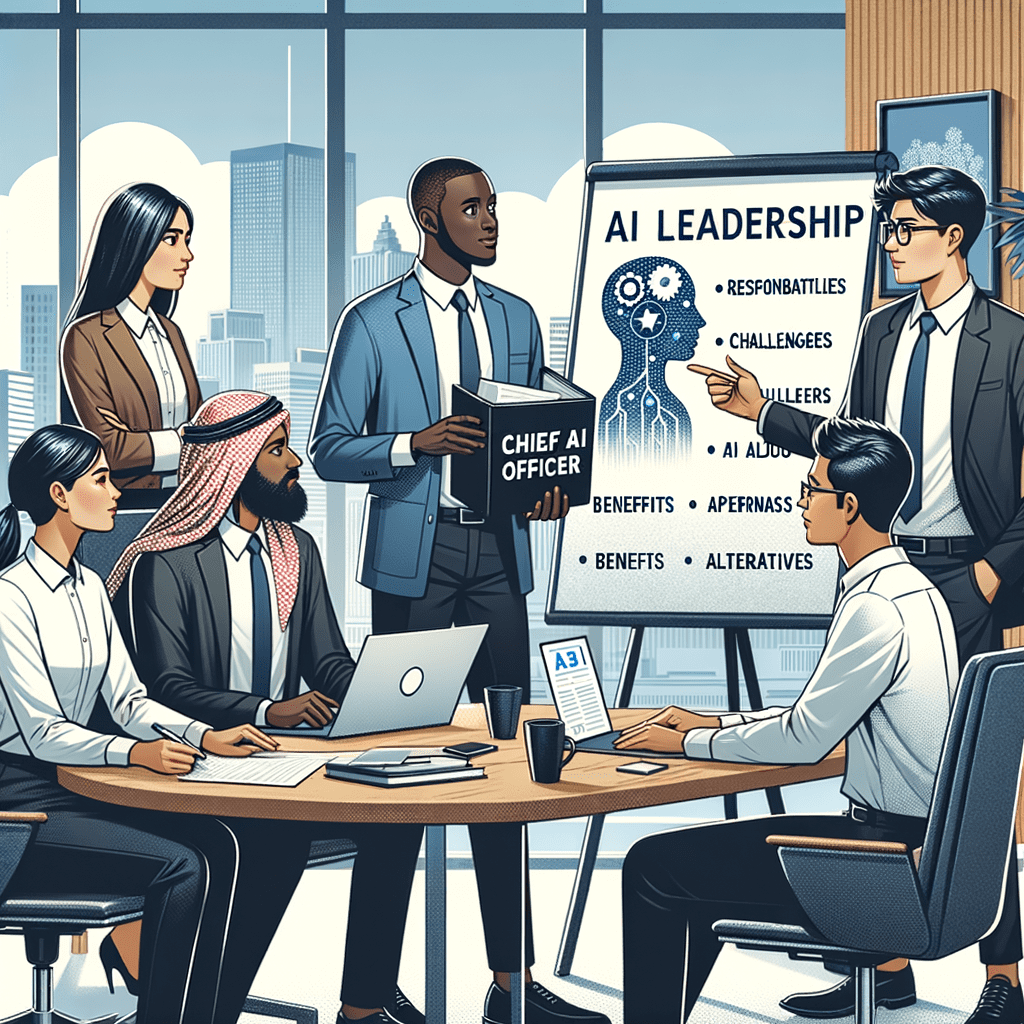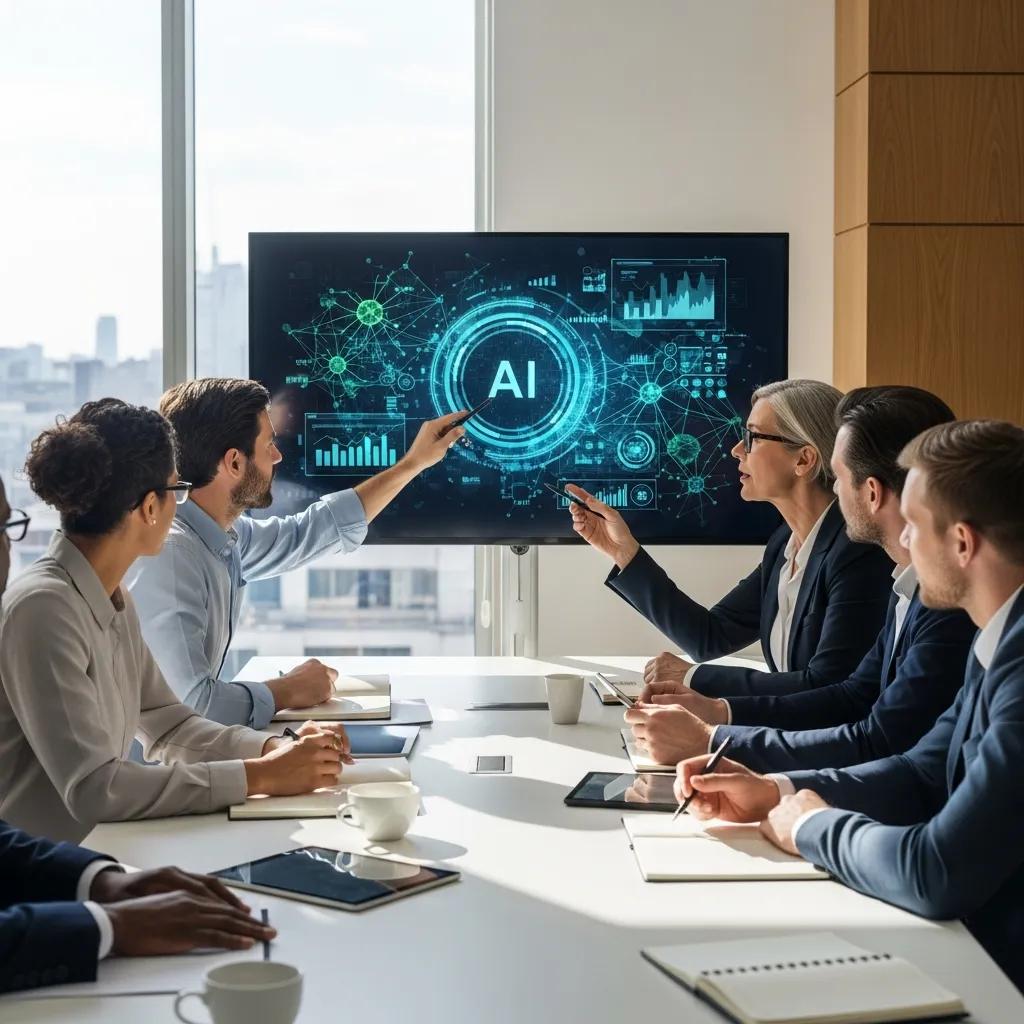Considering a certified Chief AI Officer? Balancing employee well-being with increased productivity is a top priority for businesses. If you lead a small to mid-sized business and are exploring AI, this post is for you. Discover the benefits of hiring a certified Chief AI Officer.
Artificial intelligence is transforming businesses. Many leaders wonder how to harness this technology. Hiring a certified Chief AI Officer might be the solution.
Why Hire a Certified Chief AI Officer?
A certified Chief AI Officer (CAIO) offers specialized AI knowledge. They transform ideas into actions, providing strategic guidance and implementation. They bridge the gap between technical AI and your company’s vision, explaining complex concepts clearly.
A CAIO aligns data-driven decisions with business goals like improved employee satisfaction. This helps your artificial intelligence initiatives benefit the business overall.
How a CAIO Improves Employee Well-being and Productivity
CAIOs advocate for employees. A skilled CAIO understands workforce concerns about change. They champion strategies for a smooth transition, reducing stress related to new technologies.
CAIOs use AI to lighten workloads, automate routine tasks, and provide advancement opportunities. They foster an environment where AI empowers employees. This leads to higher engagement and job satisfaction, while allowing more room for focusing on other business objectives. This improved artificial intelligence talent is what really fuels successful digital transformations within your company.
Hire a Certified Chief AI Officer: A Step-by-Step Guide
Ready to hire a certified Chief AI Officer? Prepare an AI-friendly environment. Enhance data quality and infrastructure, and refine data governance. This allows your CAIO to focus strategically from the start.
This preparation attracts top talent and sets your CAIO up for success. These changes within your private sector business help your organization to leverage AI most effectively. These business initiatives also set the stage for proper change management with respect to implementing your new AI strategy.
- Define Your Needs: Identify the specific problems you want to solve. Clarify business objectives to find a CAIO with relevant expertise.
- Prioritize Certifications: Seek certified individuals who understand current needs and think strategically about growth. Focus on executive leadership with business certifications and proven ability to lead. This AI leader must help create and guide the business strategy in alignment with executive-level decision-making within the organization.
- Evaluate Experience: Look for experience in AI, data management, and cross-functional teamwork. A change-focused and people-centered AI approach is critical. A strong technology background combined with financial services experience is valuable for some industries. A generative AI skill set will also help you align business objectives within the organization.
- Partner With a Search Firm: An executive search firm specializes in this type of recruitment. They access a wider pool of global talent through their professional networks.
- Streamline the Process: Act decisively when making an offer. In this evolving field of executive search, it’s time to implement processes for efficiently finding your ideal AI talent.
- Focus on Retention: Implement onboarding programs and provide resources. Show appreciation to demonstrate your commitment to AI team members. Highlight support for continued education and data capabilities.
Integrating a CAIO into Your Organization
Integrating a CAIO requires change at all levels. This includes training and budget allocation. It signals a commitment to data privacy and governance. It’s how you hire a chief AI officer while creating a culture of respect.
Open communication, including regular meetings and training, fosters the successful and ethical use of AI technologies. This ensures all staff and the board are aligned on AI initiatives. It improves operational efficiencies through greater communication and collaboration among cross-functional teams. Make sure you have risk management in place, along with a detailed understanding of your data infrastructure to avoid any negative side effects to the transformation.
FAQs about Hire a Certified Chief AI Officer
Do you need a chief AI officer?
Not all businesses require a full-time CAIO. Smaller organizations or those starting with AI can consider fractional CAIOs. This is especially useful for initial AI exploration and building centralized solutions. This could apply to many technology companies that are looking to improve operational efficiency, or federal agencies that seek to streamline internal workflows and procedures. These initiatives should be in alignment with any White House executive orders that involve these specific federal organizations. The CAIO intelligence officer would ensure the business operations remain compliant with all requirements. Hire chief AI as your CAIO for these particular scenarios. Alternatively, hiring for a position such as a chief data officer, chief technology officer, chief digital officer or technology officer could offer many of the benefits provided by a CAIO.
What is the best certification to get for AI?
There’s no single “best” AI certification. The ideal qualification depends on the specific industry and role. Relevant experience, education, and certifications all contribute to CAIO expertise. This can range from a chief artificial officer all the way to chief artificial intelligence officer and even artificial intelligence officer.
How much do chief AI officers make?
Salaries typically range from $250,000 to over $1 million, depending on experience and location. It is a lucrative position with plenty of opportunity as the market expands, specifically within the San Francisco area, home to many machine learning and AI startup businesses. Hiring managers at such locations understand the importance of finding top candidates.
How do I get an AI certificate?
AI certification can vary. It might involve a specialized degree, an MBA, or certifications from leadership roles. Executive certifications from renowned institutions like MIT, Harvard, Stanford, or IMD are valuable. Executive education can prove invaluable as these programs focus specifically on the practical experience that would most benefit your career trajectory. Such experience can make or break a CAIO position application at top-performing technology firms, particularly in relation to the executive-level skillset often necessary for guiding complex AI initiatives that require the collaborative efforts of various cross-functional teams and departments within the company. AI officers usually understand this important element in career growth, making the more challenging certification pursuits all the more appealing for chief officers with business objectives of getting a chief officer job as quickly as possible within today’s most demanding high-growth machine learning sectors, especially given the need to guide AI projects through every stage of execution to eventual product release.
Conclusion
When deciding to hire a certified Chief AI Officer, consider your company’s position, business model, and long-term goals. Integrating AI, whether through a fractional or full-time CAIO, can revolutionize your business. From employee well-being to revenue projections, a data-driven CAIO can drive innovation and boost job satisfaction. Embracing AI-centric growth strategies is key to remaining competitive. It’s how your company can thrive in the age of artificial intelligence while simultaneously creating a work environment where all team members are empowered to excel. Hiring a CAIO could significantly enhance your business as AI continues to advance. This will enhance the human skills of everyone working at the company as they now have the support and resources to achieve so much more than without. That support empowers human staff at every level from employees all the way to executive level staff.






